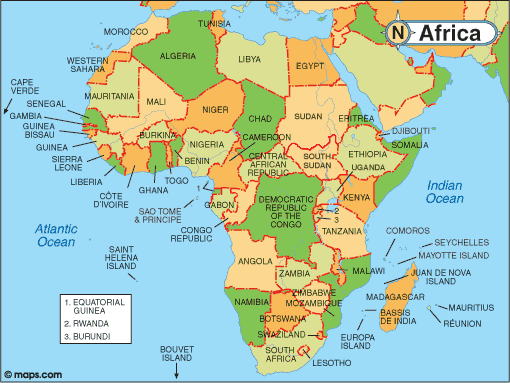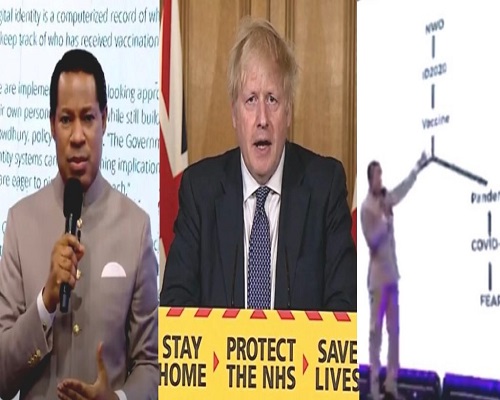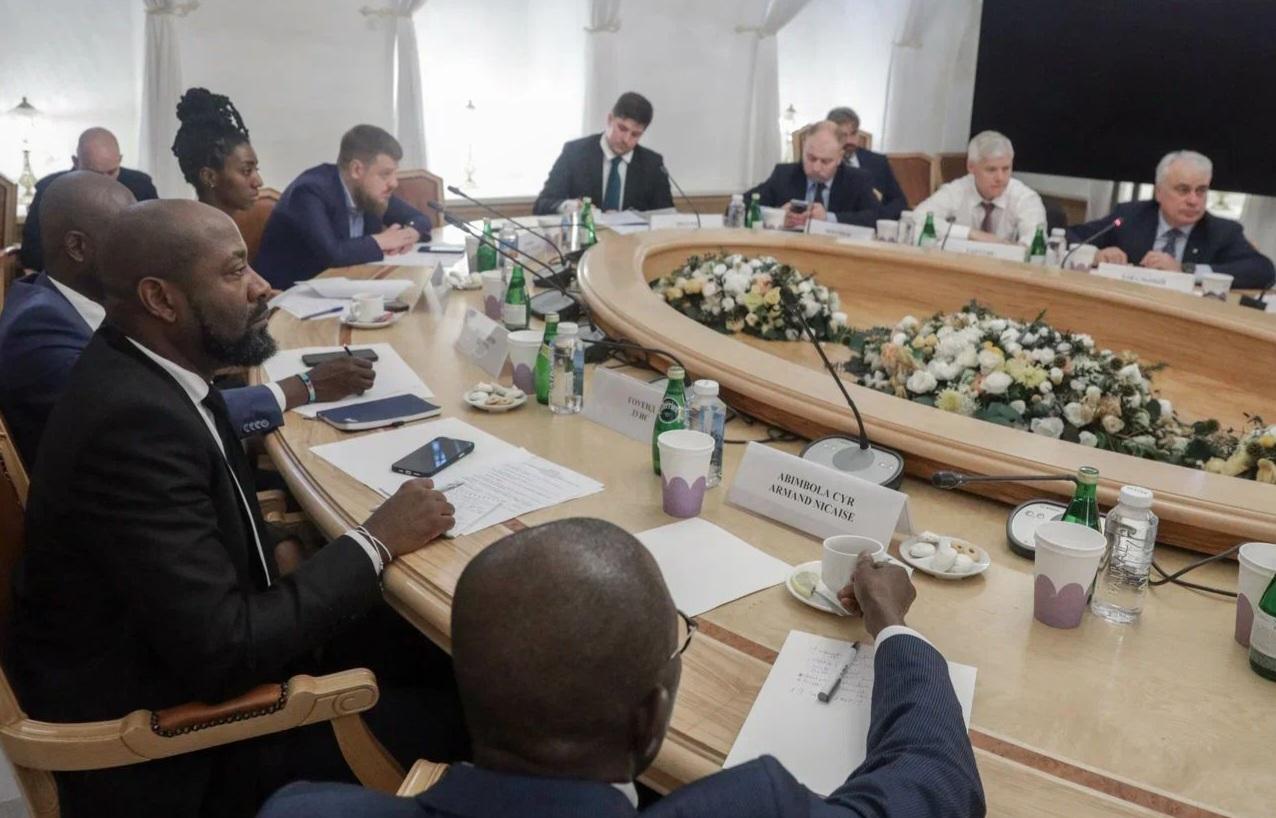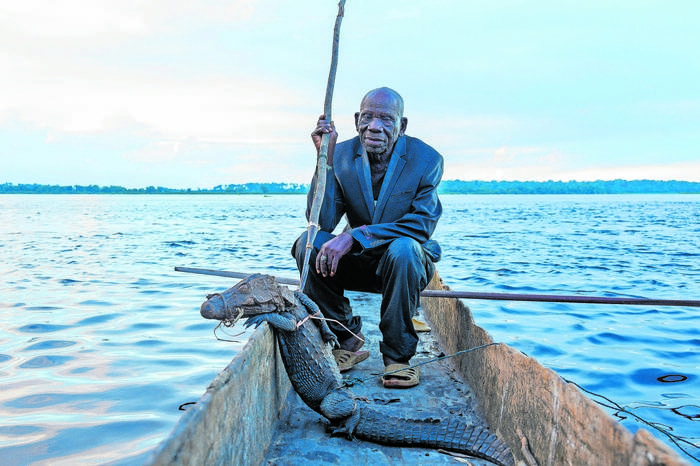News Africa
African Countries embarking on Nuclear Technologies must adopt the IAEA approach Framework

With energy for both domestic and industrial use still in deep deficit, a number of African countries are looking to install nuclear plants as part of the energy mix. But the two principal setbacks encountered are (i) getting through the pre-installation technical stages or processes, (ii) identifying sources of finance for the construction and (iii) dealing with nuclear waste and employment of well-trained professional staff.
The International Atomic Energy Agency (IAEA) sets the principles and conditions for the facilities of a major nuclear power programme and for the choice of construction sites to att the technical aspects aimed at ensuring nuclear safety.
It sets requirements for controlling dangerous release of radioactive materials, in case of an unexpected catastrophic incident or crisis, for instance an attack of any kind from or against the plant, targeting the reactors, risky fuel storage and any other critical sabotage on the infrastructure.
The Chernobyl disaster in Ukraine and Fukushima in Japan, remind the world of the human and environmental costs of nuclear power accidents. Millions of people are still suffering from radiation and radiation related diseases till today.
Records show many African countries are opting for building nuclear plants in order to find long-shelf solutions to chronic power shortages. Several agreements with Russia has not materialised primarily due to lack of adequate funds. With training, our research shows that since 2010 hundreds of students from Algeria, Ghana, Egypt, Zambia, Kenya, Nigeria, Tanzania, Uganda, Ethiopia and South Africa have received nuclear and related education at leading Russian educational institutions.
Adopting nuclear energy is a long process. Here is latest developments on the nuclear project an example from Ghana. Under Nana Addo Dankwa Akufo-Addo’s administration, the roadmap of the nuclear power programme was planned to commence construction by 2023 and inject nuclear energy into the grip by 2030. Last May, Ghana completed phase two of nuclear power infrastructure development. As part of efforts to become a climate-resilient and zero-carbon energy country, Ghana has completed Phase II of the Nuclear Power Project, which includes the approval of a site for a nuclear power facility.
Deputy Energy Minister, Andrew Kofi Egyapa Mercer, announced this during a symposium on nuclear power infrastructure development. “We have currently received approval for the acquisition of our preferred and backup nuclear to host Ghana’s first nuclear power plant. And meeting our energy demand is necessary to sustain our industrial and economic growth, which is required for a middle-income economy,” he stated.
Mercer noted that the world is shifting to greener energy sources, and nuclear power is expected to be a significant source of energy. As a result, Ghana cannot afford to be left out of the global drive for energy security. “The world is migrating to cleaner sources of energy and nuclear is envisaged to be a critical source of energy. Ghana can therefore not be left out in this global search for energy security,” he added.
In 2022, President Akufo-Addo integrated nuclear technology into the country’s power generation mix. The president explained that this was consistent with the global collective commitment to the long-term availability of power and the peaceful use of nuclear energy for the benefit of society, to accelerate industrialization, and to push economic progress.
The Director of the Nuclear Power Institute, Professor Seth Kofi Debrah, says developing an attitude of consistency will aid in the nuclear plant process to become successful. The long term plan was evident when Ghana began its nuclear energy journey in the 1960’s until it was truncated. Ghana is anticipated to completely switch to nuclear energy by the year 2070, however, this will cost $581 billion.
Ghana’s nuclear programme has justified the need for alternate baseload power for industrialisation, limited hydro sources, postulated decline of gas, tariff reduction for industries, desalination, employment creation and climate change commitments.
Prof. Debrah said four candidate sites were initially selected for the construction of the nuclear power plant and after further studies by Ghanaian researchers, the team ranked the sites to settle on the first and the second being a backup. “We need approval report from the regulator by the end of Phase II. We also want to have a site evaluation report for construction permit at the end of Phase II. Construction will start at the end of Phase II,” he said.
Prof. Debrah said the team was working on a report on the preferred vendors and was hopeful that the report would be completed and submitted for consideration by Cabinet. It was necessary for the country to add nuclear energy to its energy portfolio to become a baseload energy source to support massive industrialisation in the wake of the dwindling traditional energy sources.
As of 2021, hydro accounted for 38 percent of the country’s energy generation portfolio whiles thermal accounted for 60 per cent (making it the baseload). Solar and biomass contributed 1 per cent each to the energy mix. Experts have raised concerns about the cost of power from thermal sources and there are fears that electricity prices may continue to go up if the country did not adopt cheaper energy sources. It is estimated that 40 per cent of the production cost of industries goes into electricity tariffs.
South Africa could not pursue its nuclear power simply because of the opacity in the deals signed by the former President Jacob Zuma with Russia. There is only one nuclear power plant on the entire African continent, namely, Koeberg nuclear power station in South Africa. Commissioned in 1984, Koeberg provides nearly 2,000 megawatts, which is about 5% of installed electricity generation in South Africa.
The South Africa $76 billion deal with the Russians to build a nuclear power plant collapsed along with the Government of Jacob Zuma that negotiated the deal in complete secrecy, in fact when such corporate projects have to be discussed by the parliament and necessarily have to pass through international tendering process. Russia and South Africa concluded an intergovernmental agreement on strategic partnership in the nuclear sphere in 2014. The agreement provided, in particular, for construction of up to eight NPP power units.
Rwanda has expressed similar interest in nuclear energy. But Rwanda’s annual budget stands at $3 billion while the construction of the nuclear power plant would cost not less than $9 billion which is equivalent to Rwanda’s entire gross domestic product. Talks are underway on the construction of a nuclear power plant in Burundi, Ethiopia, Mozambique, Nigeria, Tanzania and Zambia.
Shadreck Luwita, Zambian Ambassador to the Russian Federation, informed that the processes of design, feasibility study and approvals regarding the project have almost been concluded. The site of the project is yet to be designated as it is equally a process and it is envisaged that construction should commence, in earnest, not later than the second half of 2018.
In addition, he affirmed that the Russians envisaged technology transfer in the development of this massive project by way of manpower development capacity. For now, there are only a few Zambian nationals, who are studying nuclear science in one of the Russian universities in Moscow.
The Zambian Government hopes that upon commissioning of this project, excess power generated from this plant could be made available for export to neighbouring countries under the Southern African Development Community Power Pool framework arrangement.
In the case of Egypt, the agreement was signed back in 2015, and it was only in 2022 that Russia granted a loan of $25 billion for the four plants. The total cost of construction is fixed at $30 billion. El-Dabaa is the first nuclear power plant in Egypt and the first major project of Rosatom in Africa. After several years of delay, however, Rosatom began laying the concretes for the El Dabaa units. According to the project estimates by Rosatom, construction of all four NPP units is planned for completion by 2028-2029.
Many other African countries are already working on joining the atomic club in one form or another, whether it be the construction of a nuclear power plant or a research reactor or the development of nuclear infrastructure or the training of professional personnel. Our research study shows that Russia has agreements with Algeria (2014), Ghana (2015), Egypt (2015), Ethiopia (2019), Republic of Congo (2019), Nigeria (2012, 2016), Rwanda (2018), South Africa (2004), Sudan (2017), Tunisia (2016), Uganda (2019) and Zambia (2016). Memoranda of Understanding (MOUs) were signed with Kenya in 2016 and Morocco in 2017.
A nuclear power program is a complex undertaking that requires meticulous planning, preparation and investment in time, developing institutions and training human resources. The development of such a program does not happen overnight and can take several years to implement. All countries, which embark on the path towards the peaceful use of nuclear technologies, do so by adopting the IAEA Milestone Approach framework.
In conclusion, African countries considering adding nuclear power to the energy mix to enhance economic development and provide a stable and affordable supply of electricity for domestic and industrial utilization must have the necessary funds and be ready to pass through step-by-step technical procedures.
Alternatively, the renewable energy potential is enormous in Africa. Consider carefully the Grand Inga-3 on the Congo river as the world’s largest proposed hydropower scheme. It is a grand vision to develop a continent-wide power system. Grand Inga 3, expected to have an electricity-generating capacity of about 40,000 megawatts – which is nearly twice as much as the 20 largest nuclear power stations.
Another great resource is the Grand Ethiopian Renaissance Dam on the Blue Nile River in Ethiopia under construction since 2011. From our studies, researchers and experts strongly believe and further estimate that the cost of building nuclear power does not make any sense, when compared to the cost of building renewables or other sources of energy by pulling all those financial resources together in the continent, to solve energy shortages across Africa.
African leaders, to a large considerable extent, could boost outright energy security by revisiting this continental question. Least we forget that Africa has huge untapped natural resources. The Grand Ethiopian Renaissance Dam and Grand Inga-3 are the potential solution to the energy deficits across Africa, and for which must be coordinated within the framework of the Agenda 2063 by the African Union.
Source: Thepressradio.com|Kestér Kenn Klomegâh





